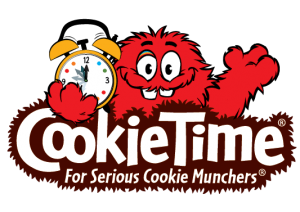Creativity is the most dynamic and mysterious force shaping our world. It is increasingly seen as an invaluable skill – both in work and in life more generally: enriching countries, companies, communities, and the lives of individuals who wield it. But what is creativity? And how does one develop it? The scientific community is investing a good deal of time and resources into answering these questions. What does this growing body of research have to say?
First: creativity is not simply something we are endowed with at birth – it can be developed and harnessed through own effort. Effort, in this context, does not mean mindlessly labouring over a notepad. It refers to the thoughtful cultivation of habits that are essential for stimulating creativity: the habits at the foundation of a creative lifestyle.
Studies on various aspects of our lives are revealing exactly which of these habits are most beneficial to our creativity. Let’s have a look at the habits that will enhance your creativity the most.
Reading
Not only does reading increase our empathy, it happens to be one of the single best habits for enhancing your creativity. It boosts creativity in three main ways: promoting a positive mindset, relieving stress and increasing tolerance for ambiguity.
A study by graduates at Western Ontario University, published in the US Association for Psychological Science journal found that creativity thrives in people who are happy and positive, which happens to be an area where reading comes in handy. A 2013 UK national survey of adult reading habits found that those who read books regularly are, on average, more satisfied with life, happier, and more likely to feel their lives are worthwhile. If you read regularly, the resulting improvements in mood will spill over into your creative endeavours. So you’re happier and more creative – kind of like killing two birds with one book!
Reading is also a boon to creativity insofar as it promotes a calm, contemplative mindset – reducing stress more than listening to music, drinking tea, taking a walk, or any other commonly used stress relief method. Stress is a significant inhibitor of creativity, so, if you find yourself stressed and struggling to be creative, pick up a book and relax.
Like stress, the ‘need for cognitive closure’ (NFCC) is a primary deterrent of creativity. NFCC defines how patient a person is in solving problems, and how likely they are to opt for the most obvious, least creative solution. Research from the University of Toronto found that those who read a piece of short fiction increased their tolerance of ambiguity, thereby reducing the need for ‘cognitive closure’. That tolerance is critical for creative problem solving; without it, the desire to reach a quick conclusion can stifle lateral thinking and bias people towards easy, uncreative options. The researchers conclude, “These findings suggest that reading fictional literature could lead to better procedures of processing information generally, including those of creativity.”
In spite of all these benefits, too often people claim they don’t have enough time for reading. The ancient Chinese philosopher Confucius would not be impressed: “No matter how busy you think you are, you must find time for reading, or surrender yourself to self-chosen ignorance.”
Meditation
Sit still and meditate – it’s a great way to create! A study from Dutch researchers at Leiden University found that “certain meditation techniques can promote creative thinking even if you have never meditated before… you don’t need to be an experienced meditator to profit more from meditation.” The authors believe that “meditation induces a control state that promotes divergent thinking”, a style of thinking that allows new ideas to be generated.
Regardless of whether or not you usually meditate, try it the next time you’re struggling with a problem – you might be surprised with the result. Even ignoring its effects on creativity, meditation offers a number of tangible benefits in a variety of areas, check all these out in our introduction to Mindfulness here (link meditation blog).
 Nature
Nature
There is a growing body of scientific evidence indicating that time spent in nature enhances higher-order thinking, restores attention and boosts creativity. A 2012 study from researchers at the Universities of Kansas and Utah examined the impact of nature on backpackers’ performances on a standard creativity test, with one 60-person group tested before their hike, and the second group tested four days in. The second group performed a remarkable 50% better after their days-long immersion in nature.
They attribute this improvement to “an increase in exposure to natural stimuli that are both emotionally positive and low-arousing and a corresponding decrease in exposure to attention demanding technology, which regularly requires that we attend to sudden events, switch amongst tasks, maintain task goals, and inhibit irrelevant actions or cognitions.” and conclude: “Our results demonstrate that there is a cognitive advantage to be realized if we spend time immersed in a natural setting.”
 Walking
Walking
The philosopher and author Henry Thoreau claimed “the moment my legs begin to move my thoughts begin to flow” and another philosopher, Friedrich Nietzsche, wrote, “All truly great thoughts are conceived by walking.” That these two human idea factories put so much faith in the power of walking should indicate something of its value in the creative process.
You don’t have to take it on testimony, however. A Stanford study titled “Give your ideas some legs: The Positive Effect of Walking on Creative Thinking” found that: “walking boosts creative ideation in real time and shortly after”. Not only are you more creative while walking, you have a residual effect afterwards. The study’s authors believe that “walking opens up the free flow of ideas” and called the activity “a simple and robust solution to the goals of increasing creativity and increasing physical activity.”
Within the study, maximum creative improvements were achieved when walking was conducted outside: possibly due to the aforementioned effects of nature. It’s a great idea to combine them if you have the opportunity. A quiet walk through the local park will do wonders for your creative capacity!
Putting it all together
These four habits are all shown by research to be great ways to boost creativity – let us know in the comments if you have experienced this for yourself.
HOW TO PREVENT SORENESS AFTER EXERCISE
You know that feeling the day after a particularly tough aerobic outing or gym session? No, not the pride; the pain! That dull, stubborn ache deep in your muscles is called Delayed Onset Muscle Soreness or DOMS for short. It sucks. But what is it, other than the uncomfortable evidence of your hard work? And, more importantly, how do we make it stop!?
What and Why
The pain comes from microscopic tears within your thoroughly exercised muscle tissue. But they’re not a bad thing – they’re a symptom of the stresses of becoming stronger. The pain is your body’s way of politely informing you “I’m doing repair work, so please take it easy!”
DOMS is generally more pronounced at the beginning of a regimen. When you’re submitting previously unworked muscles to grueling physical labour there will, of course, be a few complaints. As those muscles get accustomed to their new workload, they’ll complain less and maybe even start to enjoy themselves a little! That said, a little stiffness or soreness is natural after pushing yourself, and even veterans experience DOMS when they exert themselves fully.
If you don’t want DOMS, don’t exercise. Unfortunately, there is no avoiding the affliction: it is a natural and unavoidable obstacle on your path to being fit and strong. That said, there are a variety of things that you can do that will significantly reduce the pain and get you back up and moving faster.
BEFORE EXERCISE
Protein
Protein and muscles are good friends. We get the amino acids that are the building blocks of muscle tissue from the protein we eat. In order for your body to rebuild and maintain the muscles damaged during intensive use, it’s imperative that you top up on protein beforehand.
 Caffeine
Caffeine
A 2013 study from University of Rhode Island researchers found that caffeine ingestion improves can improve physical performance in a variety of tasks. What is interesting, however, is that they authors say there “a further beneficial effect of sustained caffeine ingestion in the days after the exercise bout is an attenuation of DOMS. This decreased perception of soreness in the days after a strenuous resistance training workout may allow individuals to increase the number of training sessions in a given time period.” So, not only do you perform better – you can perform more. If you’re sensitive to caffeine, try green tea (link GT blog) which has a lower caffeine content than coffee.
Warm up
As every junior coach ever has tried (and failed) to tell their over-enthusiastic charges, warming up is important! Not only for performance and injury prevention, but also for reducing DOMS. Try some light cardio and dynamic stretching to ease your muscles into a strenuous workout.
Water
Hydration, hydration, hydration. Water and hydration are under-appreciated and too-often ignored. Exercising while dehydrated is not good: you’re likely to cause more damage to your muscles and undermine the body’s ability to repair itself.
DURING EXERCISE
Don’t overdo it
Start slow! Too often people will go crazy when they begin a new exercise regimen, running headlong down the street in brand new Nikes. It’s understandable: motivation is as high as awareness of DOMS is low. But, unless you like the pain, take it easy when starting out and let your body become accustomed to novel movements and stresses. Gradually increase intensity alongside your muscular resilience. Your muscles will thank you for it.
Water or electrolyte replacement
Keep drinking! Water is generally fine, but as your body sweats out important electrolytes it’s more likely you develop cramp, fatigue, nausea and even confusion! Who knew you could sweat yourself into confusion? If electrolyte levels aren’t returned to normal your muscles will have a hard time recovering.
AFTER EXERCISE
Stretching
Just about the first thing on your muscles’ to-do list after an intense bout of exercise is tighten up. The first thing on your to-do list is to prevent that from happening: that tightness is a primary source of the soreness to come. Stretch relevant areas slowly and gently, rid yourself of that tight feeling. When muscles are in recovery mode they tend to tighten up, exacerbating feelings of soreness. Slow, gentle stretching of the area will relieve that tight feeling and minimise the pain before it begins.
Massage
Massage, like stretching, can reduce tightness and prompt your muscles into relaxing. In addition, it promotes blood flow – meaning oxygen and nutrients, which helps speed recovery and shorten the duration of DOMS. Foam Rollers, while not as glamorous as a personal masseuse, are a pretty effective way of getting the job done.
Warm bath
Yet another good way to loosen up tight muscles and improve circulation. Also, very nice. A not very nice alternative is taking a cold bath (or shower) which reportedly reduces inflammation and ultimately, muscle soreness by 20 percent.
Sleep
Sleep is when your body does the majority of its healing magic, including protein synthesis which, as we mentioned, is essential for maintaining and repairing muscles. Not getting enough sleep can have serious negative effects on recovery and performance so be sure to catch enough z’s the night after any significant physical exertion.
In conclusion, while we might not be able to prevent DOMS entirely these suggestions should help make the effects more than manageable. Try them out and let us know in the comments if you can disprove the old adage “no pain, no gain.” Good luck!





